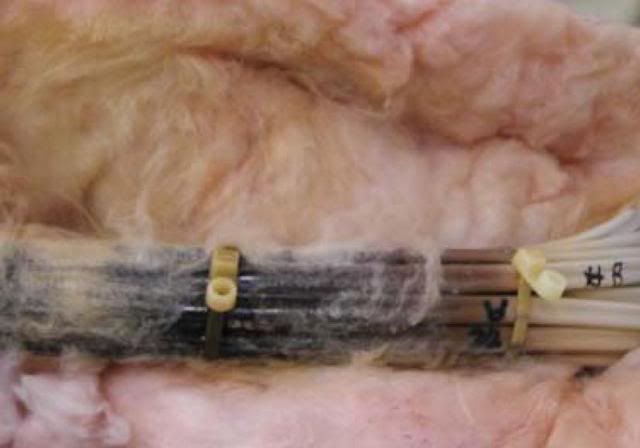Now, if I got this correctly, one can use 90 degrees ampacity for derating purposes, but has to use the 60 degrees for OCPD when it comes to NM.
This really puzzles me.
I always thought (and I know I'm right), that the degrees limitations are because the wire will get THAT hot when fully loaded (IE #12 loaded at 30A will get 90 degree hot), and 75 or 60 degrees because no termination is rated for 90degrees. So the problem at the termination is not the wire, but the terminal, which will melt if getting hotter than 75 degrees.
The middle of the conductor is not the end of it.
So why exactly do we have to use 60 degrees for NM? I can see if the insulation is rated for 60 degrees(in which case it'd be the middle of the wire which couldn't use the 90 degree ampacities).
Why exactly can NM get 90 degree hot in the middle, but can not get 75 degree hot at the termination?
And please, no answers like:"because Southwire rated their NM as such". Southwire wants to sell more #6 than #8 so that's not a valid answer.
This really puzzles me.
I always thought (and I know I'm right), that the degrees limitations are because the wire will get THAT hot when fully loaded (IE #12 loaded at 30A will get 90 degree hot), and 75 or 60 degrees because no termination is rated for 90degrees. So the problem at the termination is not the wire, but the terminal, which will melt if getting hotter than 75 degrees.
The middle of the conductor is not the end of it.
So why exactly do we have to use 60 degrees for NM? I can see if the insulation is rated for 60 degrees(in which case it'd be the middle of the wire which couldn't use the 90 degree ampacities).
Why exactly can NM get 90 degree hot in the middle, but can not get 75 degree hot at the termination?
And please, no answers like:"because Southwire rated their NM as such". Southwire wants to sell more #6 than #8 so that's not a valid answer.


